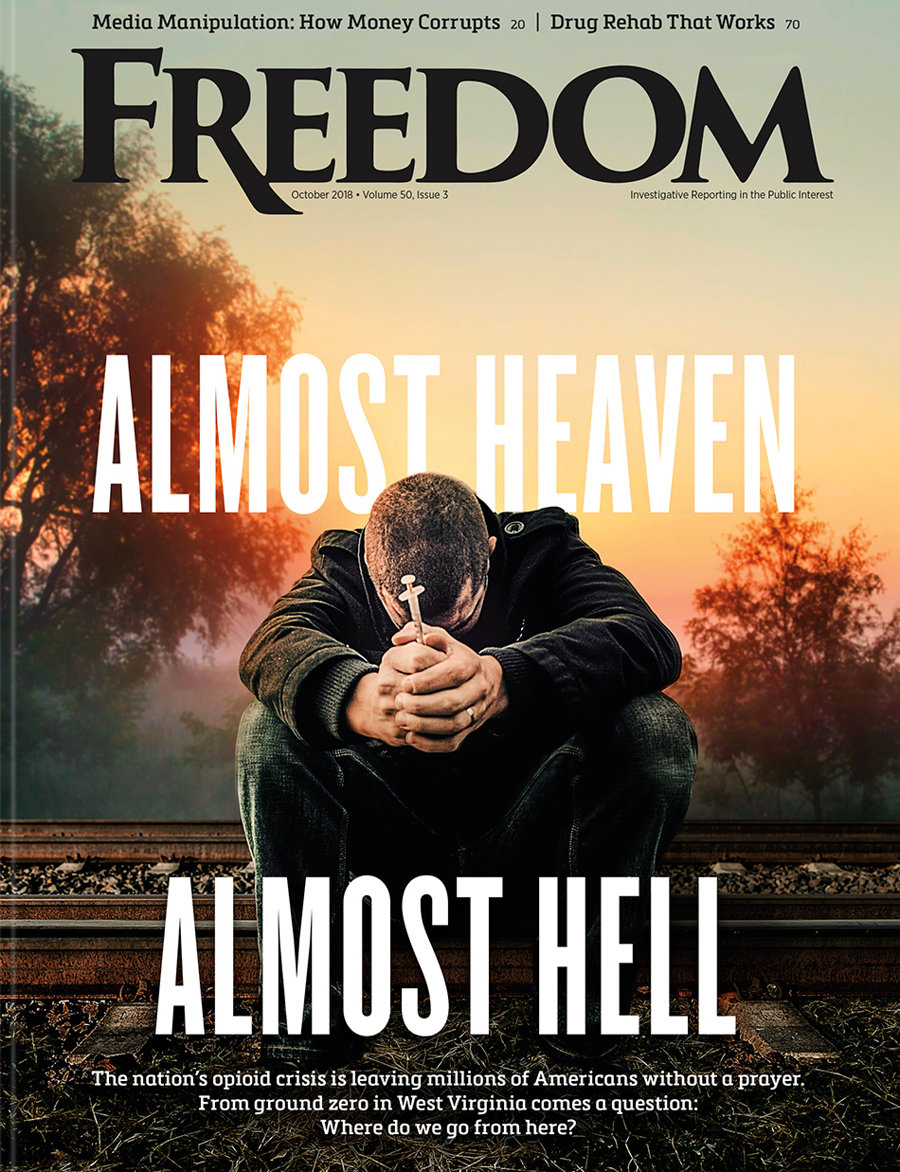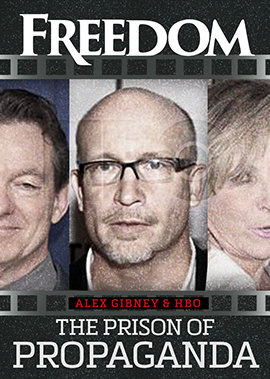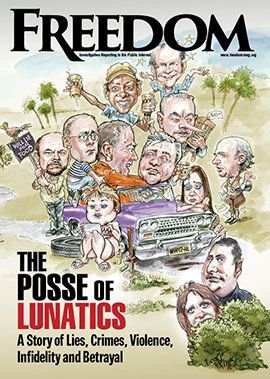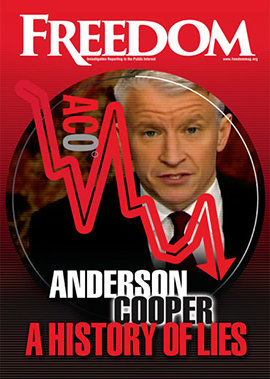And why would you ever take such a drug yourself?
The answer is: You wouldn’t. But for well over 20 years, millions of Americans have been taking—and giving their kids—the psychiatric drug atomoxetine.
And now, drug regulatory agencies in both Germany and Australia have issued warnings that the drug can cause homicidal and suicidal behavior and thoughts.
That’s right—the drugs you’re giving your children on the advice of psychiatrists can make them want to kill you.
“The idea that a drug prescribed to millions of children and adults could induce homicidal behavior is nothing short of astonishing.”
Twenty-three years ago, psychiatrists and Big Pharma began pushing atomoxetine on Americans because they realized it was a golden goose capable of lining their pockets with enormous riches—if only they could con Americans into believing they needed to take the drug.
That same year, the US Food and Drug Administration (FDA) approved atomoxetine’s use for Attention-Deficit/Hyperactivity Disorder (ADHD), which was swiftly released under the brand name “Strattera” by Eli Lilly.
And the race to the bank was on.
After psychiatrists convinced millions of Americans they needed to be taking this new “wonder drug,” Lilly made profits of $147.1 million in the second quarter of 2010 alone. And one of the ways that the psychiatric community encouraged such a heavy use of Straterra was by widening the ADHD diagnostic criteria—making it easier to give a diagnosis to just about anyone—so they could start pumping out the drugs.

“The stakes are enormous,” said Citizens Commission on Human Rights (CCHR) President Jan Eastgate. “The atomoxetine hydrochloride market was valued at $1.2 billion last year, and the US ADHD drug market overall has ballooned to $20 billion annually. Yet consumers remain uninformed of the magnitude of these risks.”
After Lilly’s patent expired, the company started gradually phasing out Straterra, but four other drug companies—Apotex, Teva Pharmaceutical Industries, Aurobindo and Glenmark—immediately jumped on the gravy train with generic versions of their own.
But according to Drugs.com, atomoxetine can cause anxiety, panic attacks and trouble sleeping, or can make you “impulsive, irritable, agitated, hostile, aggressive, restless, hyperactive (mentally or physically), depressed or have thoughts about suicide or hurting yourself.”
“The idea that a drug prescribed to millions of children and adults could induce homicidal behavior is nothing short of astonishing,” Eastgate states, “yet parents and consumers remain largely in the dark. This is a complete breakdown of a system that should uphold the highest standard of informed consent.”
Two other ADHD drugs, Ritalin and Adderall, can cause effects like “psychosis, which may cause you to see things that are not real or to feel like bugs are crawling on your skin,” Healthline writes.
Nice, right?
Do you want to feel like that?
Do you want your children to feel like that?
This year, Australia’s Therapeutic Goods Administration (the equivalent of the US FDA) updated the product information for atomoxetine to include a special warning of “severe cases” of physical assault or threatening behavior and thoughts of harming others as a “side effect” in children taking the drug.
A whopping 15.5 million American adults and 7 million children between the ages of 3 and 17 have been diagnosed with ADHD.
Meanwhile, in Germany, the federal drug regulatory agency has sounded the alarm about another atomoxetine side effect: toxic and fatal “serotonin syndrome”—dangerously high levels of serotonin in the body—as well as “physical assaults or threatening behavior and thoughts, including homicidal thoughts.”
And for what?
ADHD, the “disease” or “neurodevelopmental disorder” that Big Pharma and psychiatrists claim atomoxetine can “cure” doesn’t even exist.
“The psychiatric profession has never reminded the general public that these psychiatric categories are merely symptom clusters with indistinct borders, not clustered by nature but by the DSM [Diagnostic and Statistical Manual of Mental Disorders] committees,” Dr. Derek Summerfield of London’s Institute of Psychiatry, Psychology and Neuroscience wrote, referring to “mental illnesses” like ADHD. “Reference to ‘neurodevelopmental disorders’ is thus ungrounded,” he added, calling the term “an advertising label promoting a new field and essentially disease-mongering.
“We are witnessing a spectacular rise from nothing in the societal profile of ‘adult ADHD,’ in part fueled by self-administered checklists. The same checklists would qualify people for other diagnoses—or for none at all—but ‘adult ADHD’ is the diagnosis of the day.”
Dr. Allen Frances, who once chaired the American Psychiatric Association’s DSM-IV task force, termed the surge in ADHD diagnosis a false “epidemic.”
Neurologist Dr. Richard Saul echoed the sentiment. “ADHD makes a great excuse,” he said. “The diagnosis can be an easy-to-reach-for crutch. Moreover, there’s an attractive element to an ADHD diagnosis, especially in adults. It can be exciting to think of oneself as involved in many things at once, rather than stuck in a boring rut.”
To be clear, as psychiatrists will be the first to tell you, there is no actual test that determines whether a person has ADHD—but that doesn’t stop them from “diagnosing” you with the phantom “mental illness.”
Meanwhile, even as such “diagnoses” explode, a study by Dr. Lauren Moran of McLean Hospital in Massachusetts found that high doses of anti-ADHD stimulants increase the risk of developing psychosis or mania by more than five times.
But don’t expect Big Pharma to publish that in the findings of their clinical trials. In fact, researchers in Denmark took a close look at 292 ADHD clinical trial studies and found widespread methodological flaws that undermine the scientific reliability of many ADHD drug trials.
SciTechDaily headlined an article, “Misdiagnosed Millions? Why ADHD Science May Be Leading Us Astray.”
“With adult ADHD diagnoses soaring,” the article reads, “often driven by online content, the findings [of the Danish study] raise serious concerns about research reliability and treatment accuracy.”
A whopping 15.5 million American adults and 7 million children between the ages of 3 and 17 have been diagnosed with ADHD—and a large percentage of them are buying and taking psychiatric drugs for it.
In other words, psychiatry and Big Pharma, holding hands, have succeeded beyond their wildest dreams in creating a market—and mammoth profits—from deadly drugs prescribed for a condition that doesn’t even exist.
And the very drugs meant to “cure” that nonexistent condition instead can make a person psychotic or turn them homicidal or suicidal.
People, we are being sold a bill of goods by fraudsters like the sideshow snake oil peddlers of old, with only one certain outcome: the enrichment of pharmaceutical companies and psychiatrists.
It’s time to face the truth: Are you concerned that you or your child might be crazy—concerned enough that you would take a drug that can cause real craziness?
That could even kill you?
Now that really IS crazy.






















